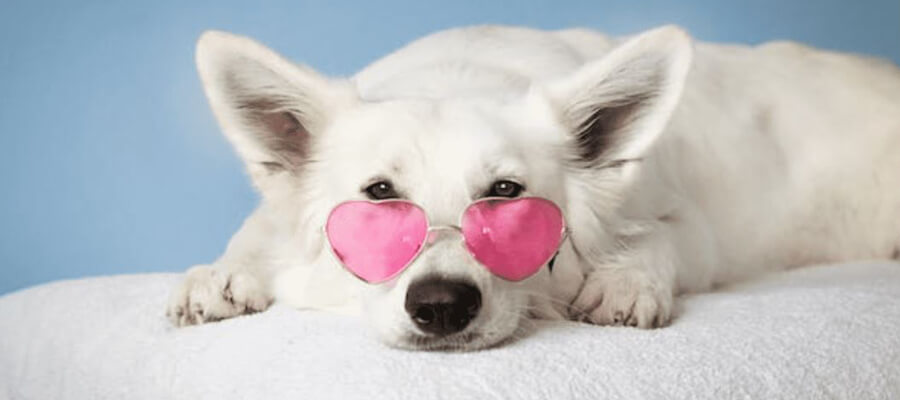
How to Handle a Dog’s Heat Cycle
How to Handle a Dog’s Heat Cycle: A Comprehensive Guide for Pet Owners
Introduction
For pet owners, understanding a female dog's heat cycle is crucial for responsible care and management. The heat cycle, also known as the estrous cycle, is a natural part of a female dog's reproductive life. This guide will help you navigate the various aspects of a dog's heat cycle, including its signs, duration, and tips for management, ensuring your furry friend stays comfortable and healthy during this time.
1. Understanding the Heat Cycle
A. What is the Heat Cycle
The heat cycle refers to the reproductive cycle of female dogs, during which they become receptive to mating. It typically begins between six months to two years of age, depending on the breed. The cycle occurs approximately twice a year and lasts about three weeks.
Essentials for Your Newly Adopted Pet
Welcoming a shelter pet into your life is a beautiful journey. Here are some handpicked items to help your new friend feel safe, loved, and right at home:
B. Phases of the Heat Cycle
The heat cycle is divided into four main phases:
- Proestrus: Lasts about 7 to 10 days. During this phase, you may notice swelling of the vulva and a bloody discharge. While male dogs may be attracted to her, she will not be receptive to mating.
- Estrus: This phase lasts about 5 to 14 days. The discharge may change to a lighter color, and the female dog will be receptive to males. Ovulation occurs during this phase.
- Diestrus: Lasts about 60 to 90 days. If the dog is not pregnant, her body will begin to return to its normal state. She will no longer be receptive to males.
- Anestrus: The period of inactivity between heat cycles, lasting several months until the next proestrus phase begins.
2. Recognizing the Signs of Heat
Understanding the signs of a dog in heat can help you manage the situation effectively. Look for the following signs:
- Swelling of the Vulva: One of the most noticeable signs of heat.
- Bloody Discharge: A bloody discharge is typical during the proestrus phase.
- Increased Urination: Dogs may urinate more frequently to mark their territory.
- Behavioral Changes: Increased affection, restlessness, or nesting behaviors.
- Attraction of Male Dogs: Male dogs may show increased interest in your female dog.
3. Managing Your Dog During Her Heat Cycle
A. Hygiene and Cleanliness
- Use of Dog Diapers: To prevent messes around the house, consider using dog diapers designed for females in heat. Change them regularly to maintain hygiene.
- Regular Bathing: Keep your dog clean during this time. Bathe her as needed, but avoid over-bathing, as it can strip natural oils from her skin.
B. Limit Exposure to Male Dogs
- Supervision: Keep a close eye on your dog when outdoors. Prevent her from interacting with male dogs to avoid unwanted mating.
- Secure Fencing: Ensure your yard is securely fenced to prevent escape.
C. Provide Comfort and Care
- Calm Environment: Create a comfortable space for her to relax. Offer soft bedding and quiet areas to help her feel secure.
- Distraction Techniques: Engage her in gentle play, training, or interactive toys to keep her occupied and distracted from the discomfort of heat.
4. Considerations for Dog Owners
A. When to Consult a Veterinarian
- Unusual Symptoms: If you notice excessive bleeding, signs of pain, or unusual behavior, consult your veterinarian for advice.
- Spaying Consideration: Discuss spaying options with your vet, especially if you do not plan to breed her. Spaying can prevent future heat cycles and reduce the risk of certain health issues.
B. Preventing Unwanted Litters
If you choose not to spay your dog, it’s essential to be proactive in preventing unwanted litters. This involves careful management during her heat cycle, including limiting interactions with male dogs and considering temporary housing arrangements if necessary.
5. After the Heat Cycle
A. Recovery and Care
Once the heat cycle is complete, monitor your dog’s health and behavior for any changes. Ensure she receives a balanced diet and regular exercise to help her return to her normal routine.
B. Behavioral Changes
Some dogs may exhibit changes in behavior post-heat. If your dog shows signs of stress or anxiety, consider consulting your veterinarian for advice on managing these issues.
Conclusion
Handling a dog's heat cycle requires understanding, patience, and proactive management. By recognizing the signs, maintaining hygiene, and providing a comfortable environment, you can support your dog during this natural phase of her life. Always consult with your veterinarian for guidance on spaying and any health concerns that may arise during the heat cycle. With the right care, you can ensure your furry friend remains happy and healthy throughout her heat cycle and beyond.
Affiliate Products
We may earn a small commission when you shop through our links — it helps us keep sharing love and care for every dog out there, at no extra cost to you.
Up to 75% Discount

Dog Collar with Health Monitoring
BUY NOW »
Up to 55% Discount

Luxury Faux Furhuge Napping Bed
BUY NOW »

